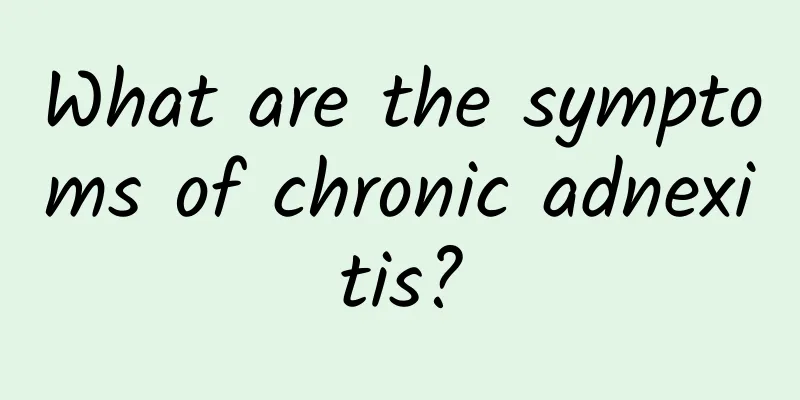Experts explain the reasons why dysmenorrhea still occurs after marriage

|
In real life, most dysmenorrhea patients will gradually disappear after marriage, and dysmenorrhea will slowly heal automatically, but some people are still deeply tortured by dysmenorrhea. What are the common causes of dysmenorrhea after marriage? The following is a list of common causes of dysmenorrhea after marriage. Generally, the common causes of dysmenorrhea after marriage are: Pelvic inflammatory disease Pelvic inflammatory disease refers to inflammation of the female pelvic cavity, reproductive organs (including uterine fallopian tubes, ovaries), pelvic peritoneum and connective tissue around the uterus, collectively referred to as pelvic inflammatory disease. Pelvic inflammatory disease is also a relatively common gynecological disease, which is particularly common in some countries with disordered sexual life and rampant sexually transmitted diseases. The vast majority of pelvic inflammatory diseases are caused by pathogens in the vagina that rise along the mucous membrane to the pelvic organs. Inflammation of the reproductive organs and their surrounding tissues is often not isolated, but affects each other and becomes inflamed at the same time. Common symptoms are dull pain in the lower abdomen, nausea, fatigue, etc. This is a common cause of dysmenorrhea after marriage. Endometriosis It is also a common cause of post-marriage dysmenorrhea. Endometriosis is the growth of endometrial tissue outside the uterine cavity, such as the myometrium, ovaries or other parts of the pelvic cavity. There are also periodic changes and bleeding, and pain during menstruation due to the inability of blood to flow out. And due to adhesions with surrounding tissues and organs, dysmenorrhea gradually worsens. Internal examination can find that the uterus is enlarged and hard, with poor activity, or hard irregular nodules or masses can be palpated in the uterine rectal pouch, which are obviously tender. The above are the common causes of dysmenorrhea after marriage, and I hope it will be helpful to female friends. These causes of dysmenorrhea can be avoided, and patients must actively receive relevant treatments in order to recover health as soon as possible. |
<<: Introduction to several more serious sequelae of abortion
>>: Experts explain important inspection measures for painless abortion
Recommend
Are your muscles strong? Here are 5 kettlebell exercises to keep your body strong
Dynamic hamstring stretch According to research, ...
How to completely treat pelvic effusion and how to care for it
For all patients with pelvic effusion, I believe ...
Four common symptoms of irregular menstruation
How much do you know about the symptoms of irregu...
What are the consequences of a woman's hydatidiform mole?
Hydatidiform mole is a pregnancy-related disease ...
What are the risk factors for uterine fibroids? What is the high-risk age group for uterine fibroids?
Women with uterine fibroids will lead to many adv...
Why is Bartholinitis difficult to cure?
Nowadays, women do not pay attention to their hea...
What are the four major enemies of uterine fibroids? What is the effective treatment method for uterine fibroids?
What are the four main enemies of uterine fibroid...
What is the cause of vulvar leukoplakia?
What are the causes of vulvar leukoplakia? Vulvar...
What medicine is good for adnexitis?
What medicine can cure uterine adnexitis quickly?...
Three kinds of drug treatments for women after abortion. Two kinds of dietary therapy to help the body recover after abortion.
Many women are in great pain after abortion. Some...
What are the symptoms of women suffering from cervical hypertrophy?
The cervix is an important part of a woman, and...
TCM tips for epidemic prevention: Drinking epidemic prevention tea and practicing Ba Duan Jin can increase immunity and boost vitality
In the post-epidemic era, when a new life with ep...
What methods should be used to treat female cervical erosion? What are the misunderstandings in the treatment of female cervical erosion?
Ladies all know that nowadays, more and more peop...
How long does it take to get pregnant again after an abortion?
How long it takes to get pregnant again after an ...
Will I not get vaginitis if I don't have sex? What are the ways to prevent vaginitis?
Vaginitis is the most common gynecological diseas...









